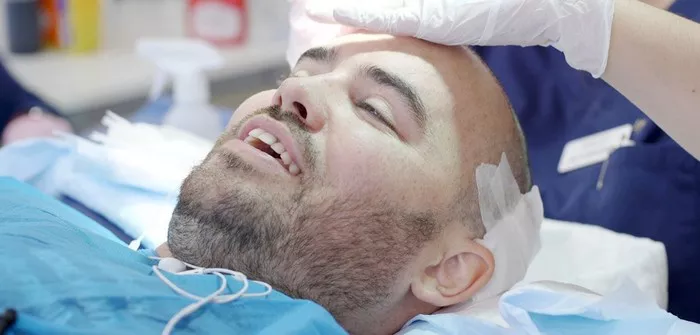Hair transplant is a surgical procedure that involves the transfer of hair follicles from a donor site to a balding area of the recipient’s scalp. The success of the procedure depends on various factors, including post-operative care. One of the most common questions asked by patients after a hair transplant is how to sleep comfortably without damaging the newly transplanted hair follicles. In this article, we will explore the answer to this question in detail.
The Importance of Post-Transplant Care
Post-operative care is crucial for the success of any surgical procedure, and hair transplant is no exception. Proper care after a hair transplant can help in the healing process and ensure the best possible results. Failure to follow the post-operative instructions can lead to complications such as infection, bleeding, and poor hair growth.
Why Is Sleeping Position Important After a Hair Transplant?
After a hair transplant, the scalp is in a delicate state, and the newly transplanted hair follicles are vulnerable to damage. Sleeping in the wrong position can dislodge the newly transplanted hair follicles and lead to poor hair growth. It can also cause discomfort and delay the healing process.
How to Sleep Comfortably After a Hair Transplant?
The sleeping position after a hair transplant depends on the technique used during the procedure. There are two main techniques used in hair transplant surgery: Follicular Unit Transplantation (FUT) and Follicular Unit Extraction (FUE).
Follicular Unit Transplantation (FUT)
In FUT, a strip of hair-bearing skin is removed from the donor site, and the hair follicles are extracted from the strip under a microscope. The extracted follicles are then transplanted into the recipient area. In FUT, the donor area is sutured, and the sutures are removed after ten days.
Patients who undergo FUT should avoid sleeping on their back for at least ten days after the procedure. Patients can sleep on their side or stomach, but they should avoid putting pressure on the transplanted area. Patients can use a travel pillow to support their neck and keep their head elevated.
Follicular Unit Extraction (FUE)
In FUE, individual hair follicles are extracted from the donor area using a small punch tool. The extracted follicles are then transplanted into the recipient area. Unlike FUT, there is no suturing involved in FUE, and the recovery time is shorter.
Patients who undergo FUE can sleep on their back or any other position that is comfortable for them. However, they should avoid putting pressure on the transplanted area. Patients can use a travel pillow to support their neck and keep their head elevated.
Tips for Sleeping Comfortably After a Hair Transplant
Regardless of the technique used, patients can follow these tips for sleeping comfortably after a hair transplant:
Use a travel pillow: Patients can use a travel pillow to support their neck and keep their head elevated. This can help in reducing swelling and discomfort.
Avoid pressure: Patients should avoid putting pressure on the transplanted area. They can sleep on their side or stomach, but they should avoid putting pressure on the transplanted area.
Be comfortable: Patients should choose a sleeping position that is comfortable for them. They can use additional pillows to support their body and reduce discomfort.
Follow the instructions: Patients should follow the post-operative instructions provided by their surgeon carefully. They should not deviate from the instructions or use any products without consulting their surgeon.
Conclusion
Proper post-operative care is essential for the success of a hair transplant. Patients should follow the post-operative instructions provided by their surgeon carefully. The sleeping position after a hair transplant depends on the technique used during the procedure. Patients who undergo FUT should avoid sleeping on their back for at least ten days after the procedure, while patients who undergo FUE can sleep on their back or any other position that is comfortable for them. Regardless of the technique used, patients should use a travel pillow, avoid putting pressure on the transplanted area, be comfortable, and follow the instructions provided by their surgeon.
Related topic:
- Do Hair Transplants Go Grey? Understanding the Facts
- Can You Use Hair Fibers After a Hair Transplant?
- What to Expect Two Months After a Hair Transplant?


